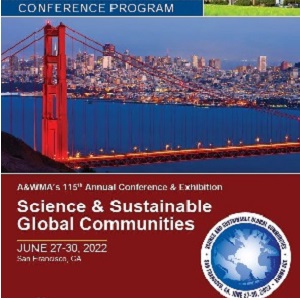Back
Technical Poster
Air Measurements, Monitoring, and Controls (AA)
Session : Technical and Student Poster Session
1197667 - Occurrence and Characterization of Perfluoroalkyl Substances (PFASs) in the Atmosphere and Surface Water Around Waste Water Treatment Plants in NY & NJ
Tuesday, June 28, 2022
10:45am – 12:15pm PT
Location: Exhibit Hall
.jpg)
Jin Y. Shin, PhD
Associate Professor
CUNY-Medgar Evers College
Brooklyn, NY- DS
- JH
Primary Author(s)
Co-Author(s)
Per- and polyfluoroalkyl substances (PFASs) are human-made substances growing concerns over their persistence, bioaccumulation, and potential adverse effects in animals and humans. The effluents of wastewater treatment plants (WWTPs) are a well-known significant source of PFASs into surface water and ambient air. Although monitoring is currently ongoing, the knowledge on PFASs occurrence from WWTP is still relatively low due to a lack of data and many source interferences. The purpose of this study is to observe the effect of WWTPs on local ambient air PFASs concentrations and ultimately assess any correlation between surface water and ambient air PFASs concentrations depending on the distance from the WWTPs. Surface water and ambient air samples were collected from the three urban streams (Raritan River in Northern New Jersey and Newton Creek in New York City) running along the WWTPs and analyzed LC-MS/MS for 26 PFAS. The most widely detected compound was found to be PFBA, with a maximum concentration in water of 150 ng/L and air of 61 ng/m3. And other dominant species of PFASs in this study were perfluorohexanoate (PFHxA)> perfluoroheptanoate(PFHpA)>, PFOA> perfluorododecanoate (PFDoDA)> perfluorononanoate (PFNA)> PFOS, perfluorodecanoate(PFDA), perfluoroundecanoate (PFUnDA), perfluorododecanoate (PFDoDA) and, perfuorohexanesulfonate (PFHxS). The average concentration of Σ26 PFASs in all samples was 405, 384, and 85 ng/L from three urban tributaries. Our results show that the distance from WWTPs in the river greatly influences the concentrations of PFASs in water and air quality. This result will characterize sources of PFAS affecting these communities and provide a baseline for planners and engineers.

.jpg)
